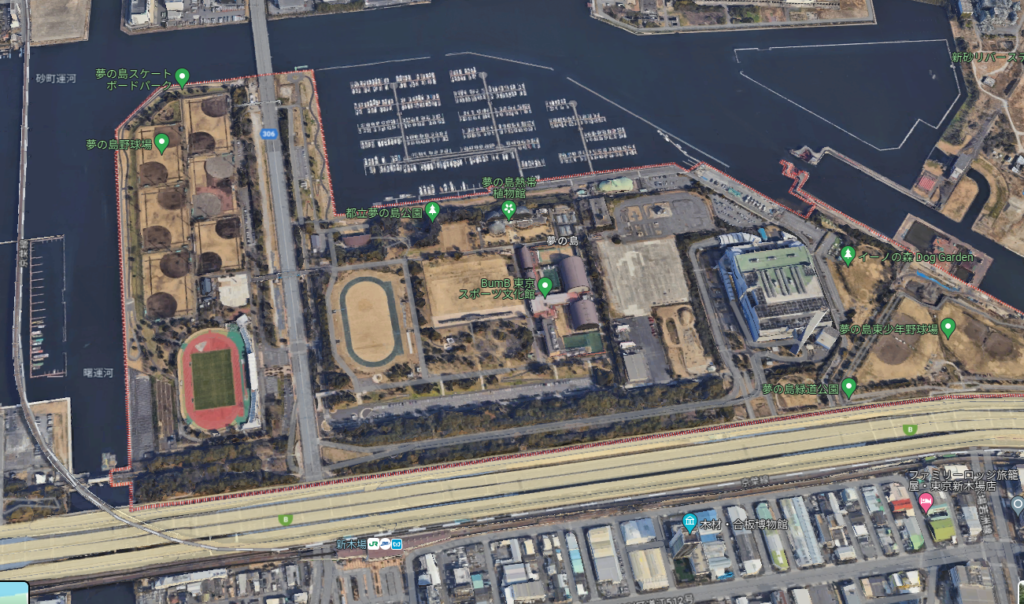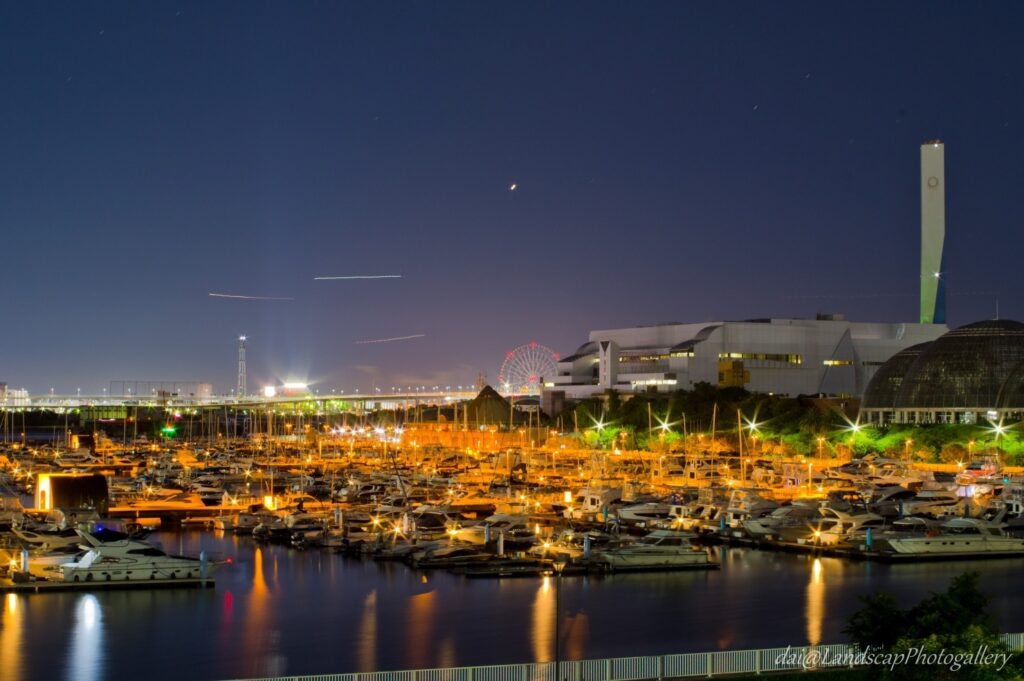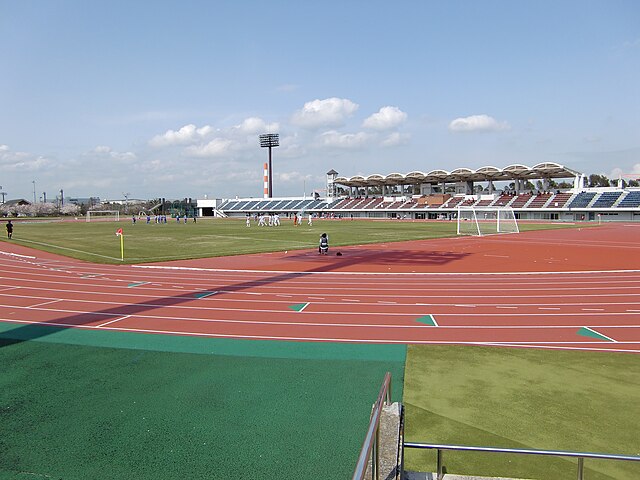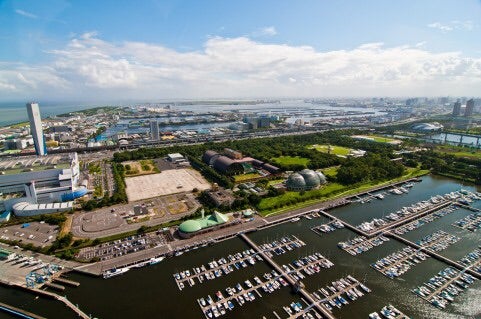There is a place in Japan called “Yume no shima”. It means Dream Island. If you have never visited the island, the name might lead you to believe that it is a place of rich nature and luxurious leisure facilities, but it is anything but. The reality of ” Yume no shima ” is an inorganic but clean landfill of about 0.9㎢, with a sports field and other amenities.
The site was originally planned to be used for an airfield. Soon after the war, it became a busy beach and amusement park, and the mass media of the time began to call the reclaimed land ” Yume no shima”. However, looking at the site again today, there are only a sports field, a botanical garden, and a cleaning plant on the huge site, and no facilities that can compete with the name ” Yume no shima ” can be seen. When I visited the site before, I could not help but think that it was a somewhat tasteless place in the face of such a vague landscape.
Will people see the current state of this ” Yume no shima ” as “losing its name”?
Those who think so probably do not know. They probably do not know the history of blood, sweat, and tears that this land has traced. The history of the struggles of our ancestors. This island bears the harsh memories of human-made disasters and reconstruction. I, as an outsider, was completely unaware of this history, which I will describe later.
Therefore, in this article, I would like to write down the horrific history of this man-made island called ” Yume no shima ” which does not resemble its name, and the great biographies of the predecessors who overcame it.
summary

Yumenoshima” as a town in Koto-ku is an artificial island (reclaimed land)
On the west side are the Yumenoshima Stadium and the Yumenoshima Sports Plaza. East of Meiji-dori Avenue is mostly Yumenoshima Park, and within the park are the Tokyo Sports Culture Museum, the Tokyo Metropolitan Daigo Fukuryu Maru Exhibition Hall, and the Yumenoshima Tropical Botanical Garden. Near the eastern edge of the district are the Shin-Koto Cleaning Plant, Yumenoshima Marina, and a youth baseball field.
Commencement of land reclamation and airfield planning
The beginning of Yumenoshima was in 1938, when the city of Tokyo began reclaiming Tokyo Bay for the construction of the Tokyo Municipal Airfield. Palm trees were planted on the beach, and the island was advertised as the “Hawaii of Tokyo,” attracting many families. There was also a plan to develop one of the world’s largest airfields at the time, but due to the Sino-Japanese War, it was not possible to secure materials and equipment to supply electricity for the construction, and construction was halted in 1941 without seeing the completion of the project. After the war, GHQ confiscated Haneda Airport, and the plan for an airfield on Yumenoshima disappeared as the airport was used by the Occupation Forces for large aircraft takeoffs and landings. The remaining reclaimed land was developed as “Yume-no-shima Beach” and named “Yume no shima” at that time. However, the beach was closed after three years due to typhoon damage.
Tokyo Garbage War (1945)

The Tokyo Garbage War refers to disputes (garbage problems) concerning the treatment and disposal of waste (refuse) in the wards of Tokyo. In particular, it refers to the disputes between Koto and Suginami wards from the late 1950s to the 1970s regarding the treatment and disposal of garbage, and the name “garbage war” was brought into focus in 1971 when Tokyo Governor Ryokichi Minobe declared a “garbage war.
During the high-growth period of the 1950s, the amount of garbage in Tokyo began to increase rapidly, and in response, the Tokyo Metropolitan Government decided to use this site as a final disposal site for garbage, and landfilling of garbage began in December 1957. The “Yume no shima” site was then given a stigma that did not live up to its name.
On July 23, 1961, while the landfill was in operation, a fire broke out in the northern part of the landfill site. Three fire boats were unable to extinguish the fire, which burned for two weeks, destroying 40,000 square meters of the landfill. This was equivalent to about 40% of the total area of the landfill at that time. In addition, garbage was landfilled without being incinerated at the time, which caused problems such as foul odors and an infestation of flies and rats.
On July 16, 1965, a swarm of flies from “Yume no shima” spread over a large area centered in Koto-ku, riding a strong southerly wind, causing extensive damage, and elementary schools in the area were unable to provide school lunches. The Tokyo Metropolitan Government and Koto Ward worked diligently to disinfect the area, but this failed to produce a drastic solution. With the cooperation of the Tokyo Metropolitan Police Department, the Tokyo Fire Department, and the Self-Defense Forces, “Operation Yume no shima” was carried out to burn down the cliffs.

The Fire Department and Self-Defense Forces were mobilized. Large quantities of chemicals were sprayed and heavy oil was poured over the trash to burn it. The person in charge at the time recalled in the “Centennial History” that “firefighters specializing in fire extinguishing walked around setting fires with their eyes shining…” “It was like a nightmare in broad daylight,” he said, recalling his mood at the time as he faced the extraordinary situation.
In 1971, the mayor of Koto Ward said, “I don’t want Koto Ward to be the only place in the city that is a dumping ground for urban waste pollution,” and in response, the mayor of Tokyo Metropolitan Government at that time said, “I don’t want Koto Ward to be the only place in the city that is a dumping ground for urban waste pollution. In response, the then governor of Tokyo declared a “war on garbage” and promised to build a waste incineration plant so that garbage generated in each ward would be disposed of within the ward. This was the beginning of the widespread recognition of the garbage problem that continues to this day.
Later, when Suginami Ward vehemently opposed the construction of the clean-up plant in its own ward, Koto Ward blocked the road and prevented the garbage from being brought in by force, leading to the suspension of garbage collection and garbage being left on the streets of Suginami Ward, bringing the garbage war to an end. Although garbage continues to be landfilled in Tokyo Bay even today, the pollution caused by raw garbage has been eliminated because the garbage is incinerated at a cleaning plant and reduced to ash, which is less than one-twentieth of its original volume, before being landfilled.
present

Koto Ward’s cleanup plant was to be built on Yumenoshima. In response to a request from Koto Ward, the Tokyo Metropolitan Government promised, in return for the construction of the cleanup plant, to convert Yumenoshima into a park and to build five facilities on the island: a greenhouse, gymnasium, swimming pool, stadium, and baseball field, all of which would use the residual heat from the cleanup plant.
In 1974, the Koto Garbage Disposal Plant was completed. The following year, “Yume no shima” became the official name of the town and it was incorporated into Koto Ward. As promised, a gymnasium and swimming pool were opened one after another.
In 1978, “Yume no Shima Park” was opened, with a layer of soil covering the entire area of Yume no Shima, and grass and trees were planted for greenery.
Since then, the park has been improved and no longer has the “trash island” atmosphere. It was reborn as a “green island” at the same time that sports facilities were constructed. Eucalyptus, which is resistant to sea breezes, rough terrain, and drought, was chosen as the plant of choice. The eucalyptus leaves were also supplied as food for the koalas at the Tokyo Zoo. Later, many tropical and subtropical trees that can be cultivated in the open, such as canary palms and malva deigo, were planted, and the artificial island, once called Garbage Island, became an exotic green park.
At the end.
It is true that “Yume no shima” may not have fertile nature or exciting amusement. However, there is a “dream” filled with human knowledge in this place. Although the garbage problem, a symbol of the human affliction, has occurred, it is also human beings who have solved the problem. It is a fact of life that after a storm of foolishness, there will always be enlightened people who will correct the situation. Although it may have taken a slightly different form than originally planned, it is because of the struggle of those who came before us that the island was able to survive such a scandalous situation. If you look at the island again with this understanding, you may have a slightly different impression of it.

Authority
Yume no shima” HP

Yume no shima” Wikipedia

Tokyo Garbage War Wikipedia



